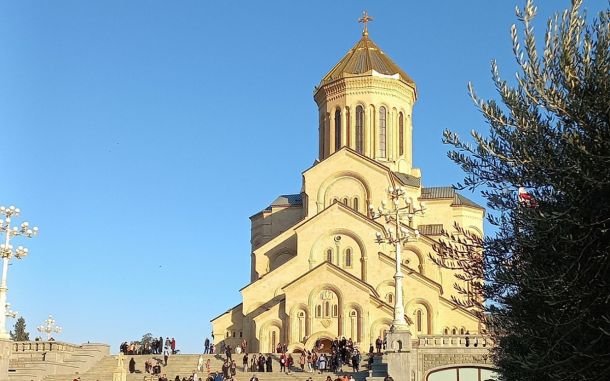Background of Kiev

Lots of old people collected around Kiev, and at the end of the 9th century the city ended up being the political facility of the Eastern Slavs. In the year 988 Christianity, introduced by Great Prince Vladimir, became the main religion of the Kievan Rus. This assisted to develop political and social connections with such states as the Byzantium Empire as well as Bulgaria. During that time almost 50,000 individuals resided in the city; there had to do with 400 churches and 8 markets. When Vladimir Monomakh passed away in the year 1152, the magnificent Kievan Rus began to degeneration. In 1240 Kiev was destroyed by Baty-khan. Just in the 14th century Kiev started to revitalize. However in 1362 Wonderful Fight it out of Lithuania caught the city. For greater than one a century it was under the command of Lithuanian as well as Polish fight it outs. Individuals’s freedom battle of 1648-1654 versus the Lithuanian-Polish Yoke resulted in freedom. However Cossack militaries, headed by Hetman Bogdan Khmelnitsky, could not handle to dominate the adversary without assistance from Russia. Therefore, Ukraine dove under an extended period of supremacy by the Russian Realm. Because that time the background of Ukraine as well as Kiev was very closely gotten in touch with Russian background. Ancient excavations reveal proof of the very first negotiations on the region of Kiev 15,000 to 20,000 years earlier.
The very early inhabitants of Kiev developed their castle on the high right financial institution of the Dnepr River to shield themselves from Nomadic people. Later on, Kiev’s Grand Dukes developed their royal residences as well as churches on Starokievskiy Hillside, while craftsmens as well as sellers resolved beside the jetty on the Dnepr. By the end of the 9th century, when the Grand Dukes of Kiev joined spread Slavic people, Kiev ended up being the political facility of the Eastern Slavs. The city preserved vast international as well as industrial profession web links because of its desirable setting in the center of profession paths in between the Vikings as well as the Greeks (rigorous means from Northern Europe as well as the Baltics to the Mediterranean). Kiev’ s advancement increased throughout the regime of Grand Fight it out Vladimir the Great (980-1015). In 988 Vladimir developed Orthodox Christianity as the main faith of the world in order to reinforce the power of Kiev on the wider worldwide sector. Throughout that time the very first rock holy place in Russia, Desyatinnaya church, was created.
Throughout the 11th as well as 12th centuries old Kiev Rus reached its best duration of ascendancy. By the 11th century Kiev was just one of the biggest facilities of people in the Eastern christian globe. During that time, there had to do with 400 churches, 8 markets as well as greater than 50,000 residents in Kiev. For contrast, at the exact same time the populace of London, Hamburg as well as Gdansk had to do with 20,000 individuals. Kiev was amongst one of the most prospering craft as well as shopping mall of Europe. After the fatality of Kiev’ s excellent Royal prince Vladimir Monomakh in 1125, Kiev Rus ended up being associated with an extended period of feudal battles. International powers fasted to capitalize on this scenario. In the autumn of 1240, the Tatar-Mongols headed by Baty-khan, caught Kiev after collection of lengthy as well as bloody fights. Kiev came under an extended duration of decrease. The Tartar-Mongols ruled for virtually a century. Regardless of an international regulation, Kiev preserved its craftsmen, profession as well as social customs as well as stayed a vital political, profession as well as social facility. In the 14th century, the Kiev area ended up being the cradle for the contemporary Ukrainian country.
In the 15th century Kiev was provided the Magdeburg Legal rights, which allowed better freedom of the city in issues of worldwide business.
Till the 14th century Kiev commemorated the Golden Crowd. After that it passed under the control of Great Lithuaninan Duchy, which in 1569 was joined with Poland. With the facility of the Kiev-Mogilyanskaya Academy in 1632, the city ended up being a facility of Ukrainian understanding as well as scholarship.
The lengthy roadway to the freedom of Ukraine started with Cossack armed forces projects. In 1648-1654 Cossack militaries, headed by Hetman Bogdan Khmelnitsky, Ukraine’s Cossack leader, salaried a number of battles to free Ukraine. In 1648, when the Ukrainian Cossacks climbed versus Poland, Kiev ended up being for a quick duration the facility of the Ukrainian State. However quickly, challenged by the militaries of Polish as well as Lithuanian feudal lords, Bogdan Khmelnitsky looked for the security of the Russian Tsar in the Treaty of Pereyaslavl. After Ukraine’s union with Russia in 1654, nevertheless, the city was obtained by Moscow. Throughout an extended period of supremacy by the Russian Realm Ukraine in the 17th as well as 18th centuries handled to maintain as well as appreciate a few of its abundant political, financial, social, as well as spiritual accomplishments.
In January 1918 after the autumn of Russian Realm, the freedom of Ukraine was announced as well as the Ukrainian National Republic was developed.
Throughout the Civil Battle that complied with the October Transformation Bolshevik Celebration confiscated power as well as broadened their round of control right into Ukraine. Ukraine comes to be a component of the Soviet Union.
Kiev suffered seriously throughout the The second world war, when several special building as well as creative treasures were ruined. Previously, in the 1930s, the Soviet authorities methodically ruined several churches. Comprehensive repair of the after-war days has actually restored a lot of Kiev’s historic and also cultural heritage. Regardless of suppressions, experiencing, political chaos, as well as eco-friendly catastrophes, Ukraine’s spirit and nationwide identification have actually never ever passed away. On August 24, 1991, after the collapse of the Soviet Union, Ukraine announced its freedom. This was the beginning of the entire new duration in the background of Ukraine and also its gorgeous resources.
Comment
Leave a Reply Cancel reply
You must be logged in to post a comment.



[…] Source link […]